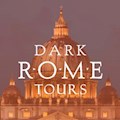There is much more to Rome than stunning architecture, world-class art and mouth-watering cuisine. Beneath the romanticized sun-soaked streets of this breath-taking city is another, darker side to Rome. Descend beneath the tourist-filled streets to uncover a city full of secrets and mysteries, a city time wishes we forgot. Here lies The City of the Dead.
Rome’s catacombs are one of the most fascinating sights in the city. Less crowded than the Vatican or the Colosseum, these somber tunnels, offer guests a completely new perspective on this incredible city. A trip to Rome’s underworld will leave you with no doubt that the Eternal City is just as intriguing below ground as it is above. Complete with examples of early-Christian art, ancient burial chambers and sacred pagan sites, you’ll be entranced by these unusual sights and will return to the land of the living with even more respect for the city of Rome and the history that occurred within these city walls.
Unravel Rome’s darkest secrets with this guide to its eerie, yet captivating, underworld.
The Ancient Catacombs of Rome

The Roman catacombs are an intricate series of passageways that were used as a place of burial between the 2nd and 5th century. Christians, at the time, condemned the pagan tradition of burning the corpses of their dead. Believing that a traditional burial was the only way to secure eternal life, they went in search of open land to bury their dead. With lack of space and high land prices they settled on a space on the outskirts of the city. Located next to a local quarry, this land had ample space to bury the growing population of the dead as disease and plagues spread throughout the crowded city. Thus, the Roman Catacombs came to be.
As Christian souls passed on to the afterlife, their corpses were taken below ground. They were wrapped in a cloth and placed in the shelf-like niches of this tunnelled underworld. Gravestones made of marble or baked clay we placed across the opening of their grave and the name of the deceased along with a symbol of Christianity were carved on top.
In early-Christian Rome, burying the dead was considered a sacred act, something which was taken very seriously. Wealthy Christians felt it was their duty to make sure all members of the community, rich or poor, were buried with the integrity and respect that they deserved. Unlike many of the sights you’ll visit on your trip to Rome, these catacombs are one of the city’s only historic landmarks where society wasn’t divided by class or by wealth.
While primarily a burial chamber, these passageways were also used as a place of worship during the 3rd Century. Christianity was illegal during this time in Rome, so believers commonly worshipped in their own homes. As their religion grew, they began to congregate in these sacred tunnels, in the hidden depths of the city’s underworld. The tables and benches still visible in the catacombs today are testament to that.
It wasn’t until 313, after the signing of the Edict of Milan, that the persecution of Christians ended. Making up for lost time, Roman Christians began acquiring land and building churches. Is it any wonder that there is so many monumental churches in Rome today?
Unravel the Mystery of Basilica San Clemente

Another of the city’s most cryptic and goosebump-inducing sights is the lesser known cellar of the Basilica San Clemente. As you explore the depths of the church’s basement, you’ll learn about the priest who was driven demented by the sound of running water, that no one else could hear. As the years past and the priest was losing sanity, he took a sledgehammer to the basilica’s solid floor, to uncover layers of Roman history hidden beneath. Visitors to this bewitching sight can walk in the footsteps of this cleric as you pass through a 5th century church, a 4th century cult temple and ultimately descent to the street level as it was in during the 1st century. It is here you will discover the ancient aqueduct (still running) that had plagued the once-serene priest.
Visit the Dead at Rome’s Capuchin Crypt

Just as fascinating as the city’s catacombs, and perhaps even more chilling, is the Capuchin Crypt or ‘Bone Chapel’. The crypt is made up of a series of small chapels, located beneath the church of Santa Maria della Concezione dei Cappuccini. As eerie as the name suggests, this spellbinding crypt is decorated floor to ceiling with the bones of the Capuchin monks. It is believed that the bones of 4,000 friars are displayed here, some still wearing their ceremonial robes. The bones are set in intricate formations to depict features including archways, chandeliers and even egg-timers. Whether you appreciate this jaw-dropping chapel as a magnificent work of art or as a macabre journey into the underworld, one thing’s for sure, this experience will haunt your dreams for all eternity.
Take a walk through the history of Rome’s dark side as you explore the sights of a fascinating city filled with mystery and macabre. While not suitable for children under ten, or anyone who gets anxious in small spaces, these spellbinding sights will help you discover an alternative perspective of this much-loved city and they societies that call it home. Join us on our Crypts and Catacombs experience or our Ghost, Mysteries and Legends tour to discover even more about Rome’s dark side.


